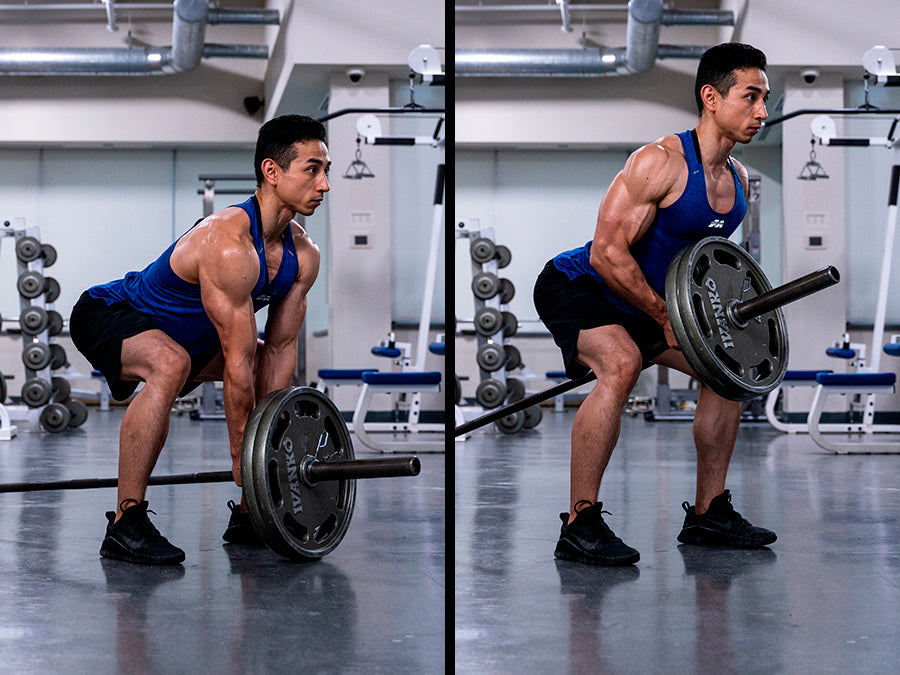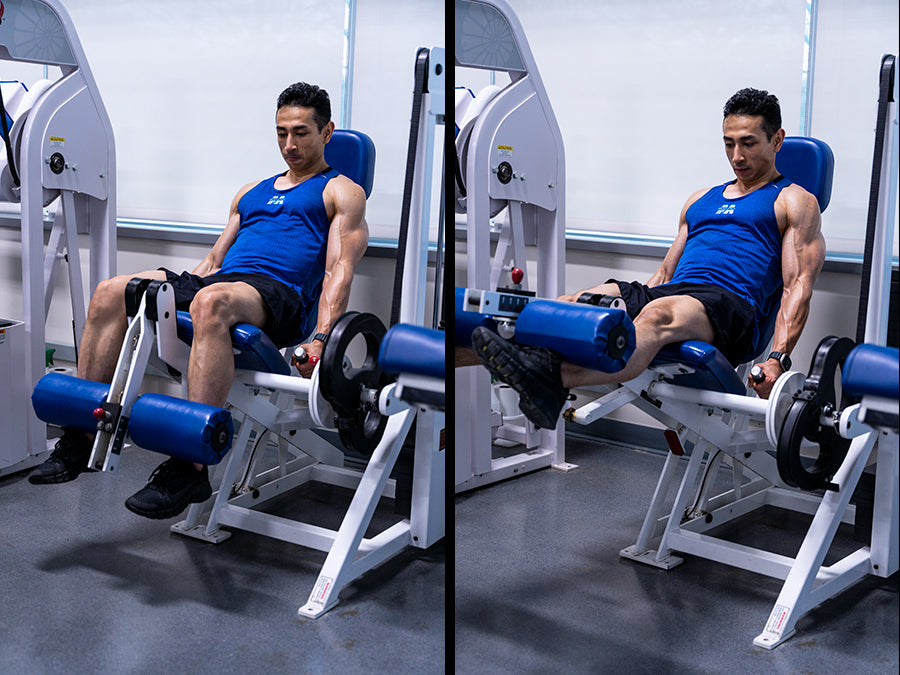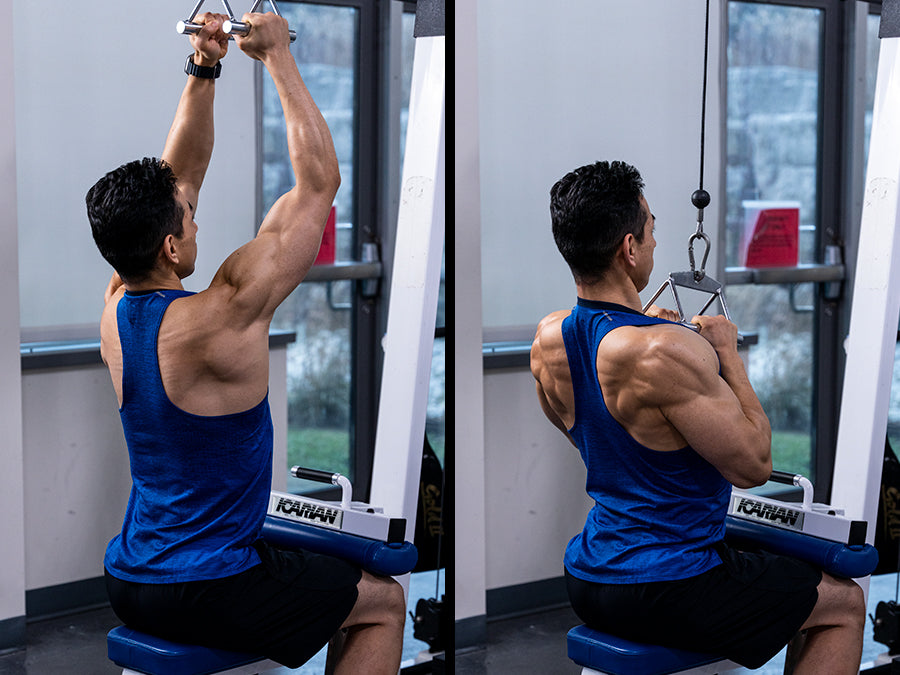By Ron Harris
A Return to the Classics - PPL Workout
In the early days of bodybuilding competition, the 1940’s and 50’s, nearly everyone trained the entire body three times a week in marathon workouts that often lasted 3-4 hours. At some point, those OG muscle men noticed how exhausted they were in the second half of those sessions and began experimenting with splitting up muscle groups.
The first inclination was to have separate upper and lower body workouts, and it wasn’t long before someone stumbled upon the concept of “push, pull, legs.” Simply put, all the pushing muscles: chest, shoulders, and triceps, were worked one day, the pulling muscles of the back and biceps were next, and legs rounded out the training cycle. Years later, the traditional ‘Bro Split’ came into being, wherein one or two muscle groups were trained per session.
Typically there are distinct training days for chest, shoulders, back, arms, and legs, though there are many combinations. With the body split up into so many different workouts, each muscle group usually only gets worked once a week. It works well for many, yet it isn’t ideal for everyone. Some of us would see better results training a muscle group more often than that.
PPL had been largely forgotten for decades until big-name Pro’s adopted it and their respective fans followed suit. You shouldn’t simply train any particular way just because a Pro bodybuilder does, though. Let me convince you with a few compelling reasons to give PPL a try.
Table of content
Zero Overlap
I don’t care how intelligent and creative you might be at designing training splits, you will always struggle with the issue of overlap. Let’s say today you trained chest. If you trained either shoulders or triceps yesterday or maybe even the day before, lack of complete recovery in either or both could negatively affect your chest workout today.
And the same goes for training either of those muscle groups tomorrow or the next day. Because both were heavily involved in all the pressing movements you did for chest, today’s chest workout could take away from those. It’s far more difficult to isolate muscle groups from each other than most people understand, since compound movements, as the name implies, involve several muscle groups at once. Arm training is especially problematic since you must strive to keep the biceps at least 48 hours away from your back workout.
Also Read: When to Take Creatine: Dos and Don’ts
Triceps must either be spaced similarly apart from chest and shoulder workouts or combined with one of them. Deadlifts are another tricky exercise because along with working the back, they also involve your lower back, quads, hams, and glutes (more on the best hack for this later).
Overlap is bad for two reasons. The first is overtraining. If you train a muscle before it’s had a chance to fully recover, even if said training is not direct but assisting other muscle groups, you have negated the whole point of what we do in the gym: break a muscle down, then allow it to rebuild itself into a slightly bigger and stronger version.
PPL goes a long way toward avoiding muscle group training overlap. If you train chest, shoulders, and triceps today on PPL, assuming you take a day off after the 3-day sequence, all those muscle groups have a full four days, or 96 hours, to recuperate before they are tasked to perform again. I can personally attest to experiencing a more complete recovery since I got on the PPL split in 2019, as well as less anxiety about striving to avoid overlap.
Also Read: Why is Spot Training a Myth?
Muscles get More ‘Growth Hits’
How long it will take a given muscle group to recover from a workout depends on several factors.
How intense was the workout?
Did you use techniques that enhance intensity but also incur more muscular damage, such as drop sets, supersets, giant sets, forced reps, or heavy negatives?
How much volume did you train it with?
Also Read: How to do Vertical Leg Crunches?
Did you perform exercises that you never have before, or haven’t in a long time?
Was it a large muscle group like the back or legs, or something smaller like the arms or calves?
In most cases, for most of us, it’s safe to say it does not take a full week for a muscle group to recover – more like 2-4 days. What happens if a muscle is fully recovered but you don’t work it again for another 3-5 days?
Regression! Think “two steps forward, one step back.” You can lose some of the size and strength gains you made. I’ve known this for years but trusted that the overlap situation would help in this regard.
Also Read: How to Prepare for a Marathon?
With PPL, everything gets worked every 96 hours, period. This works out to every muscle group being worked twice every 8 days. Most people seem to find this to be a ‘sweet spot’ where the muscle always has time to recover and is ready to be blasted again without either still being sore or being recovered so long it feels like you’ve neglected it.
This also gives you more opportunities to elicit muscle growth. If you work your chest weekly, that’s just 52 chances to make it grow in a calendar year. PPL provide 91 ‘growth hits’ in that same year. That’s almost twice as many!
Also Read: The Ultimate Guide to Trap Workouts
Flexibility
One aspect of the meticulously formulated ‘bro splits’ I followed for decades that was sometimes frustrating was the disruption that resulted from having to miss a scheduled workout for any reason.
There were times when I would have off days carefully arranged to allow for certain muscle groups to recover so there wouldn’t be that dreaded overlap into the next workout. Let’s say it was a day between chest and shoulders. If I had to train chest on that off day, it meant shoulders were on the menu the next day. Because I was training in a specific sequence of bodypart order, my recovery was then compromised.
Also read: Bulking Guide for Skinny Guys
One major appeal to PPL is that rest days can be taken whenever you need them with zero disturbance to the order. You could train on that PPL sequence 2-3 times in a row before taking an off day if your lifestyle and situation allows for that level of recovery (I would not advise it for those of you over the age of 30 who work 40 or more hours a week).
You could take a day off after the 3-day sequence, or anywhere in between. It wouldn’t matter at all. You would always pick up exactly where you were supposed to.
Turn Down the Volume
Whenever the subject of PPL comes up, the first objection most people spout is, “Those workouts would take way too long.” That would be entirely true if one simply performed his or her usual workout for each muscle group in its entirety. Doing 4 exercises each for chest, shoulders, and triceps for 3-4 work sets each would indeed have you in the gym for the better part of 90-120 minutes just with weights, never mind cardio.
Also Read: Top Supplements for Men
And by the time you were halfway through shoulders, you’d be starting to fade fast. That’s why we don’t do that. Instead, the workouts are abbreviated so they still run you no longer than a typical bodypart session. The issue with that could be that the muscle groups aren’t being worked from enough angles for maximum results.
Also Read: Slow vs Fast Absorbing Proteins
Adjustments for Maximum Results
How can we make sure the muscle groups are still being trained properly? The simple solution is to have two PPL routines that you rotate, each featuring different exercises. Taking it a step further, we change the priorities of each workout so that each muscle group gets proper attention.
For instance, on the first Push day, you would start with chest. On the second Push day, you start with shoulders. The exercise selections would match this strategy, so that you would focus on heavier free weight presses for chest on the first Push day and do the same for shoulders on the second day.
Also Read: A Complete Guide to Workout Supplements
Few among us are capable of sustaining both strength and balance/coordination for both in the same workout. Another method I believe in for PPL is to start the first Leg day with quads, and the second with hamstrings. As for back, one day can focus more on deadlifts and free weight rows, the other on vertical pulling movements and machine and cable rows.
Furthermore, let’s keep deadlifts and squats away from each other by performing them in different cycles, as you will see in the routines. Finally, you will see that I group rear delts into Pull days as they assist in nearly all pulling movements for the back.
Also Read: Best 7 Protein Powders for Athletes
Two full PPL routines (warm-ups not shown)
PPL Routine A
Push Day 1
Flat barbell or dumbbell press 4 x 12, 10, 8 (increasing weight)
Pec flye machine 4 x 10-12 (increasing weight)
Dumbbell lateral raise 4 x 10-12 (increasing weight)
Machine overhead press 4 x 10 (increasing weight)
Cable pushdown 4 x 15, 12, 10, 8 (increasing weight)
Dips 3 sets to failure, add weight if needed
Pull Day 1
Pull-ups 4 to failure
Barbell rows 4 x 12, 10, 10, 8 (increasing weight)
Deadlifts 4 x 12, 10, 8, 8 (increasing weight)
Dumbbell bent laterals 3 x 20, 15, 12 (increasing weight)
Barbell curls 4 x 15, 12, 10, 8 (increasing weight)
Leg Day 1
Lying leg curls 4 x 15, 12, 10, 8 (increasing weight)
Adductor machine 3 x 20, 15, 12 (increasing weight)
Seated leg curl 4 x 15, 12, 10, 8 (increasing weight)
Leg press 4 x 20, 15, 12, 10 (increasing weight)
Seated calf raise 4 x 20, 15, 10, 10 (increasing weight)
PPL Routine B
Push Day 2
Seated dumbbell press 4 x 12, 10, 10, 8 (increasing weight)
Machine lateral raise 4 x 12-15 (increasing weight)
Hammer Strength or Smith incline press 4 x 12, 10, 10, 8 (increasing weight)
Skull crushers 4 x 15, 12, 10, 10 (increasing weight)
Close-grip bench press 4 x 12, 10, 8, 8 (increasing weight)
Pull Day 2
Lat pulldowns 4 x 12, 12, 10, 10 (increasing weight)
Hammer Strength or cable row 4 x 10-12 (increasing weight)
Dumbbell row 3 x 10 each arm (increasing weight)
Barbell or dumbbell shrugs 3 x 15, 12, 10 (increasing weight)
Rear lateral machine 3 x 20, 15, 12 (increasing weight)
Machine curl 4 x 15, 12, 10, 10 (increasing weight)
Leg Day 2
Squats 5 x 15, 12, 10, 10, 8 (increasing weight)
Leg extensions 4 x 20, 15, 12, 12 (increasing weight)
Hack squats 3 x 10-12 (increasing weight)
Standing leg curl 3 x 10-12 each leg (increasing weight)
Romanian deadlifts 3 x 15, 12, 10 (increasing weight)
Standing calf raise 4 x 20, 15, 12, 10 (increasing weight)
Tips for Best Results from PPL
Because we are bodybuilders and thus live by the credo of ‘more is better,’ the first instinct for many of you will be to add on to the routine as listed. You may feel the need to add in additional exercises, increase the number of sets, incorporate intensity-boosting techniques, or all the above.
If you want PPL to work as well as it can for you, don’t do any of those things! Keep in mind that each muscle group is getting worked twice every 8 days, which means workouts need to respect that frequency and the need to recover that comes with it.
Also Read: The Hardgainer's Guide to Putting on Mass
If you insist on doing the same amount of volume and variety of exercises for each muscle group that you normally would when using the standard split, you defeat the whole purpose of PPL. It’s an excellent system for consolidating muscle groups of similar function in a way that allows for more chances to make gains. Used properly, it can deliver dramatic results. Give it a fair trial of at least 6 weeks, and I am confident many of you will stick with it for months or perhaps even years.
























